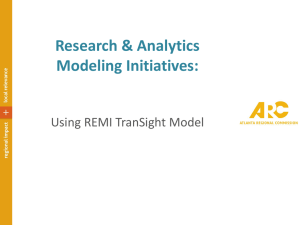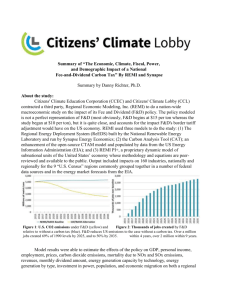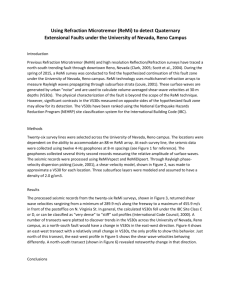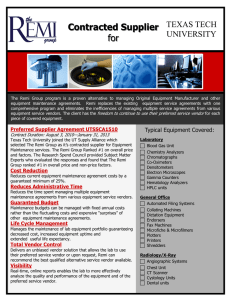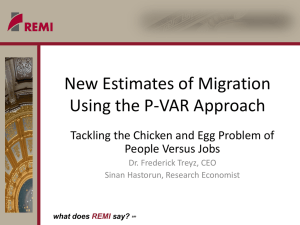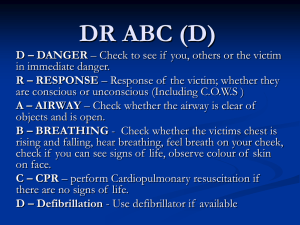ReMi Methods
advertisement
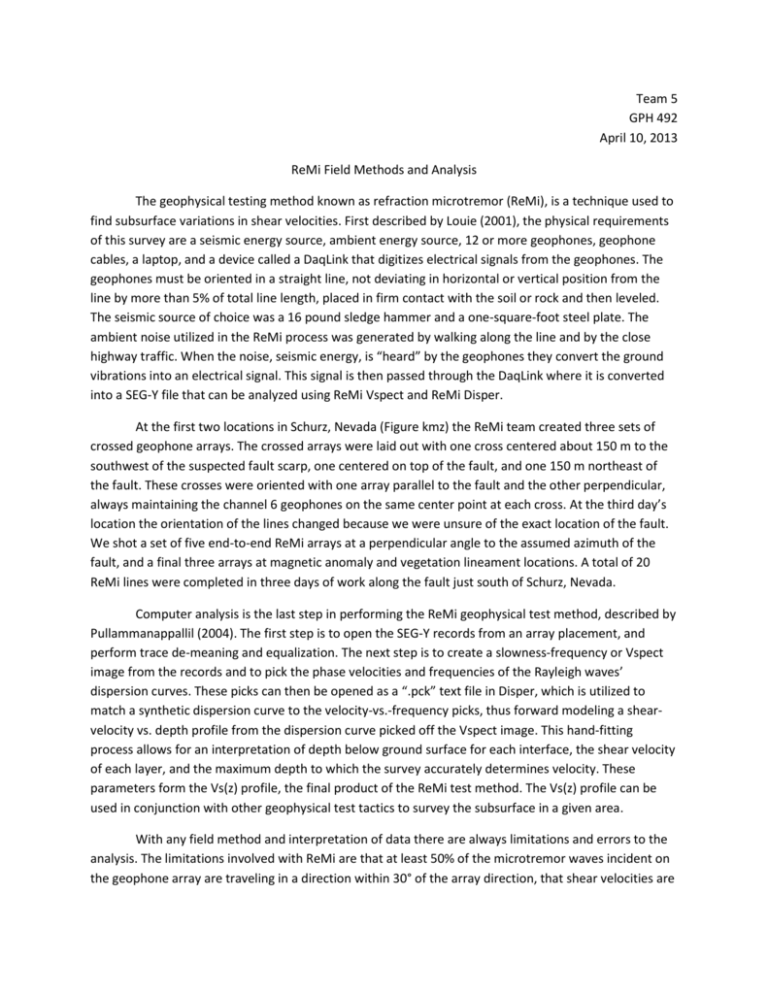
Team 5 GPH 492 April 10, 2013 ReMi Field Methods and Analysis The geophysical testing method known as refraction microtremor (ReMi), is a technique used to find subsurface variations in shear velocities. First described by Louie (2001), the physical requirements of this survey are a seismic energy source, ambient energy source, 12 or more geophones, geophone cables, a laptop, and a device called a DaqLink that digitizes electrical signals from the geophones. The geophones must be oriented in a straight line, not deviating in horizontal or vertical position from the line by more than 5% of total line length, placed in firm contact with the soil or rock and then leveled. The seismic source of choice was a 16 pound sledge hammer and a one-square-foot steel plate. The ambient noise utilized in the ReMi process was generated by walking along the line and by the close highway traffic. When the noise, seismic energy, is “heard” by the geophones they convert the ground vibrations into an electrical signal. This signal is then passed through the DaqLink where it is converted into a SEG-Y file that can be analyzed using ReMi Vspect and ReMi Disper. At the first two locations in Schurz, Nevada (Figure kmz) the ReMi team created three sets of crossed geophone arrays. The crossed arrays were laid out with one cross centered about 150 m to the southwest of the suspected fault scarp, one centered on top of the fault, and one 150 m northeast of the fault. These crosses were oriented with one array parallel to the fault and the other perpendicular, always maintaining the channel 6 geophones on the same center point at each cross. At the third day’s location the orientation of the lines changed because we were unsure of the exact location of the fault. We shot a set of five end-to-end ReMi arrays at a perpendicular angle to the assumed azimuth of the fault, and a final three arrays at magnetic anomaly and vegetation lineament locations. A total of 20 ReMi lines were completed in three days of work along the fault just south of Schurz, Nevada. Computer analysis is the last step in performing the ReMi geophysical test method, described by Pullammanappallil (2004). The first step is to open the SEG-Y records from an array placement, and perform trace de-meaning and equalization. The next step is to create a slowness-frequency or Vspect image from the records and to pick the phase velocities and frequencies of the Rayleigh waves’ dispersion curves. These picks can then be opened as a “.pck” text file in Disper, which is utilized to match a synthetic dispersion curve to the velocity-vs.-frequency picks, thus forward modeling a shearvelocity vs. depth profile from the dispersion curve picked off the Vspect image. This hand-fitting process allows for an interpretation of depth below ground surface for each interface, the shear velocity of each layer, and the maximum depth to which the survey accurately determines velocity. These parameters form the Vs(z) profile, the final product of the ReMi test method. The Vs(z) profile can be used in conjunction with other geophysical test tactics to survey the subsurface in a given area. With any field method and interpretation of data there are always limitations and errors to the analysis. The limitations involved with ReMi are that at least 50% of the microtremor waves incident on the geophone array are traveling in a direction within 30° of the array direction, that shear velocities are uniform and isotropic within each modeled layer, which is rarely ever the case. An increasing error is introduced in the depth calculations as the angle of dip of the layers departs from zero. Some significant geologic boundaries have no field-measurable seismic shear-velocity contrast, which consequently makes it impossible to detect such a boundary.


